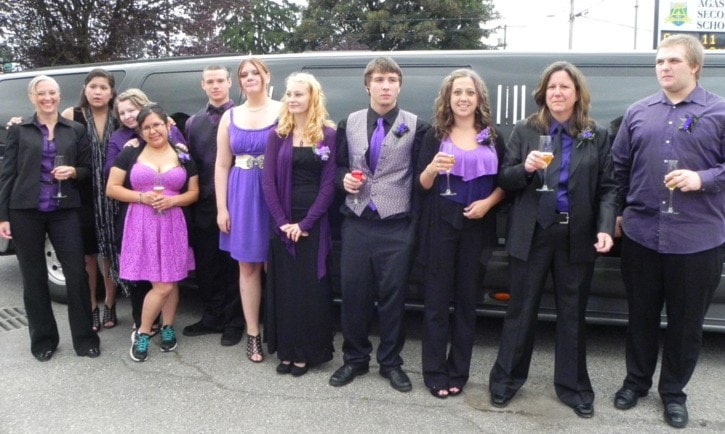Betty Urquhart was one of UFV’s first employees, and her commitment to building a strong relationship between UFV and the Fraser Valley community is one that lasts to this day. When she passed away In 1995, UFV renamed its community service award in her honour . The Betty Urquhart annually recognizes groups or individuals that exemplify Urquhart’s commitment to community.
This year the Betty Urquhart award is shared between two dedicated groups whose hard work is guaranteed to tug the heartstrings, one of which is the teen/senior program at the Agassiz Centre for Education (ACE). Some of the teenage members of the program will be on hand to receive the award on behalf of ACE at UFV’s Convocation ceremonies next week.
Sandy Balascak, who runs the senior/teen program through ACE, has no doubt that the teens in the program are deserving of this award. Some of the students, seniors, and community members involved will be at the ceremony to receive the award on behalf of ACE.
Balascak says the program began when Frank and Eunice Royle, two seniors from the Agassiz Harrison senior peer support group, approached her about her students’ reputation as “bad kids.”
“They were even a little afraid of my kids,” Balascak says, and when the seniors suggested senior/teen days to help fix that perception, she jumped right on board.
“The perception was that they were broken and were sent to this alternative program to be fixed,” Balascak explains, “But a lot of kids are here by choice because they knew they weren’t fitting in or learning at a normal high school.”
Balascak says some people thought she was crazy for trying to put seniors and teens together, but she had a good feeling about it. Sure enough, while the kids weren’t too keen on the idea to begin with, the program soon blossomed.
“It only took a couple of afternoons and the next thing I knew, more and more kids wanted to go, and more and more seniors wanted to be involved too,” Balascak says. “We went from a half-empty home to a packed hall.”
The program gained a lot of attention this past Christmas when the teens in the program gave up their Christmas morning to spend it with seniors who had no family. The students ran fundraising events, wrapped gifts, and arrived at the legion hall at six-thirty in the morning to have breakfast ready by eight.
“They just jumped at the chance,” says Balascak. “And the ones who couldn’t be there Christmas morning were still part of the fundraising. Everybody pitched in.”
Now in its third year, the teen/senior program is more successful than ever, and Balascak looks forward to hosting events for years to come, including a repeat of Christmas morning. Both teens and seniors have come a long way since the program’s inception, and now get together on a regular basis to have lunch and spend an afternoon together playing bingo or card games. Balascak is also quick to mention a long list of community members that made the group possible, including the unending support of the Legion, which donates the use of the hall for almost every senior/teen event, including the Christmas breakfast. None of it, Balascak says, would be possible without the support she and the students have had from every angle of the community.
And it’s unsurprising that once teens start the program, Balascak says not many give it up. The kids dedicate themselves to attending the afternoons and events often for as long as they attend ACE, she explains.
“And sometimes I can’t even get rid of them after they graduate!” Balascak says with a laugh. “These kids have become so community-minded.”
The kids are so willing to volunteer, in fact, that Balascak hopes to set up a volunteer network in the coming months to give the teens a chance to pitch in wherever they’re needed, from libraries to homeless shelters.
Meanwhile, Balascak sees her students go on to study in social work, seniors care, trades, and dental programs. And no matter what they do, she is proud of each and every one of them.
“There’s a reason I called it ‘when ‘bad’ kids go good,’” Balascak says. “They’re all good kids. I’m just glad the community got a chance to see that.”
